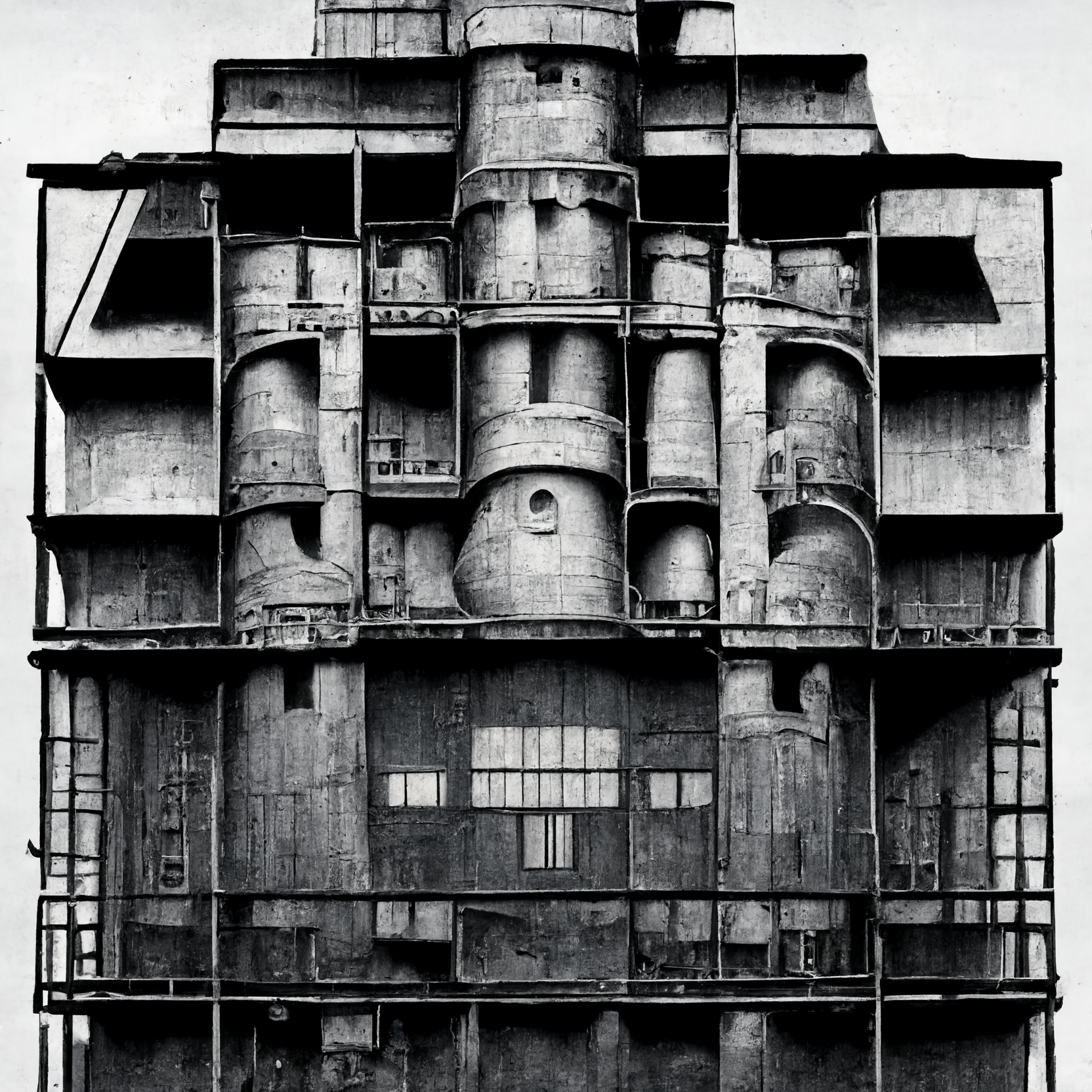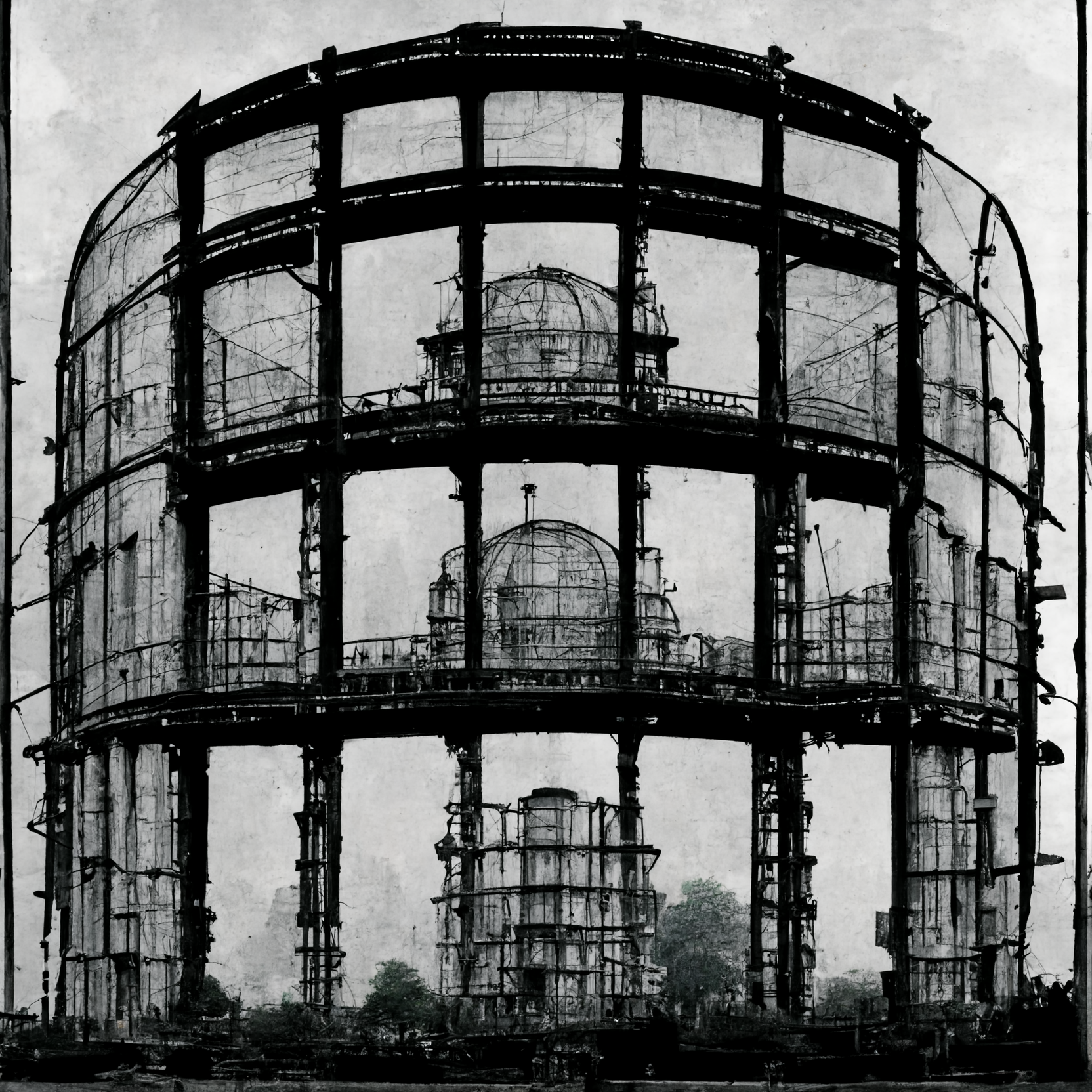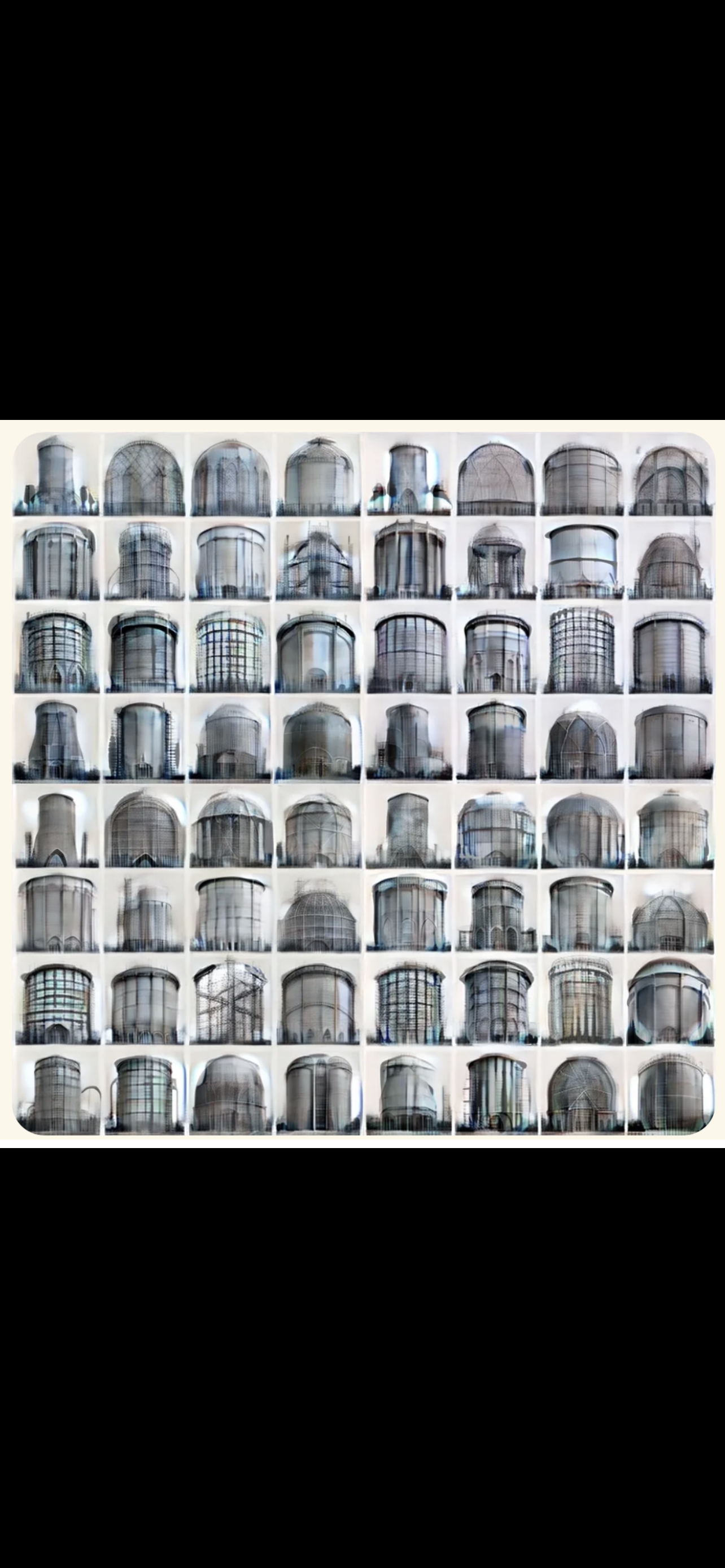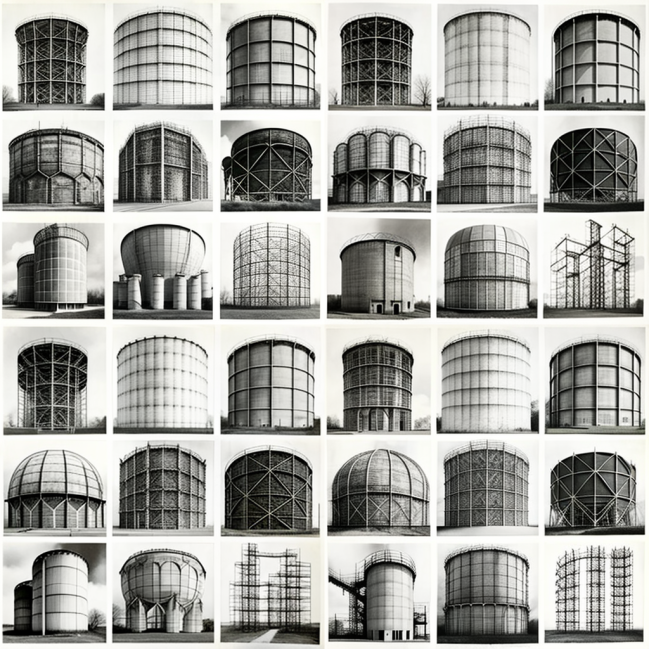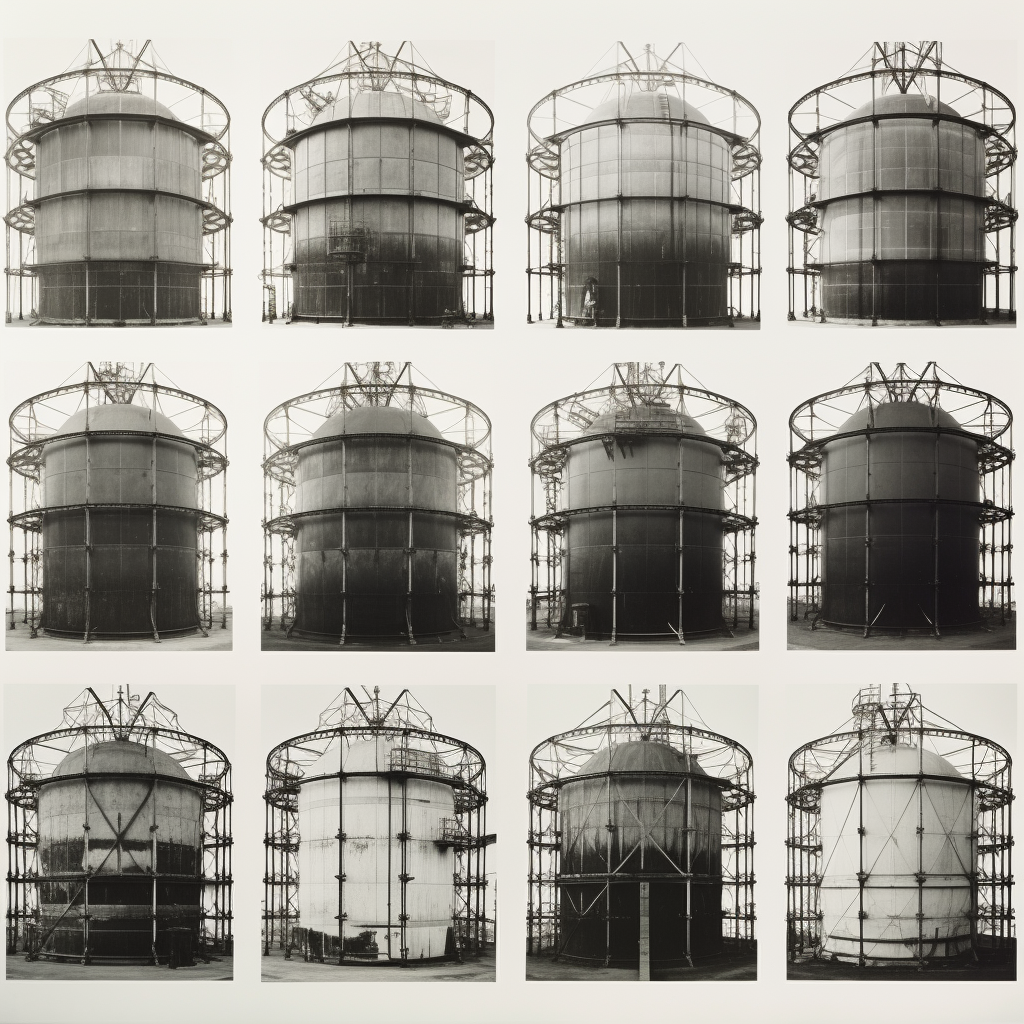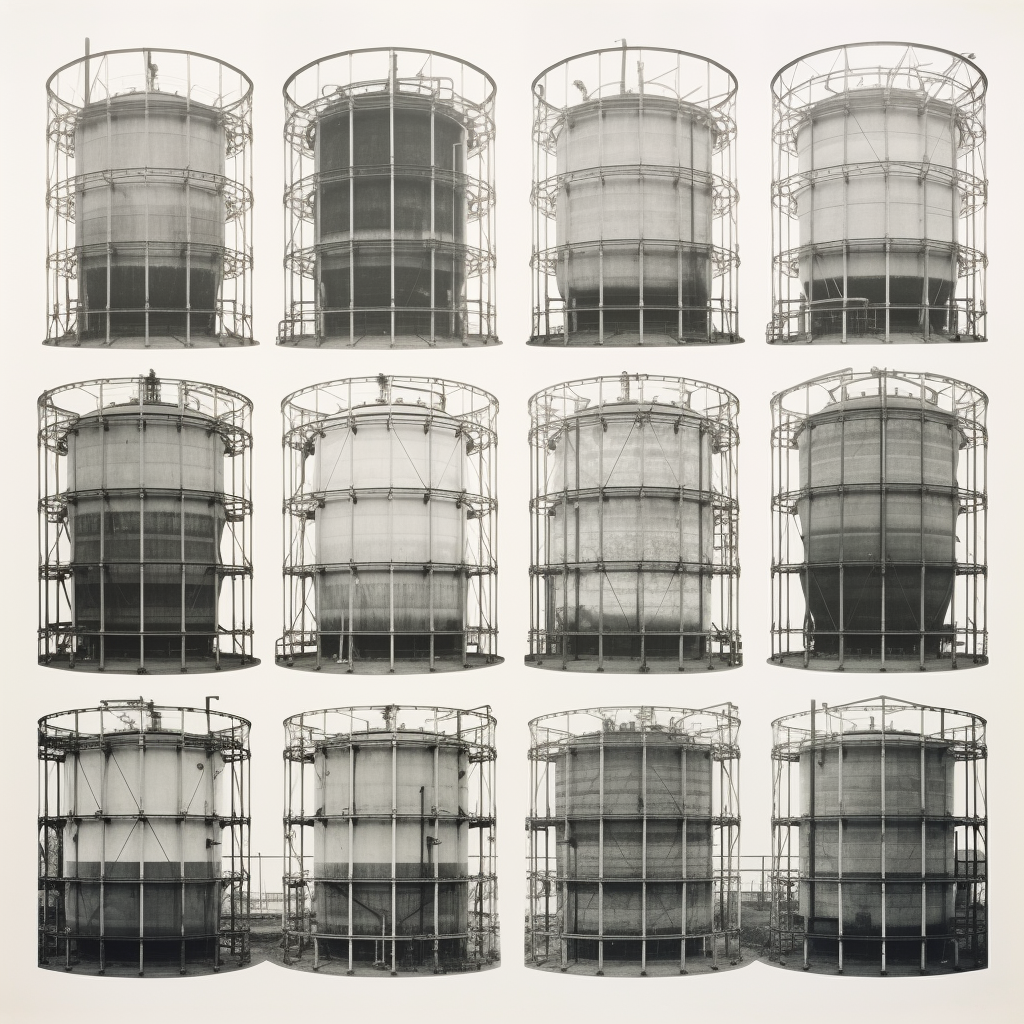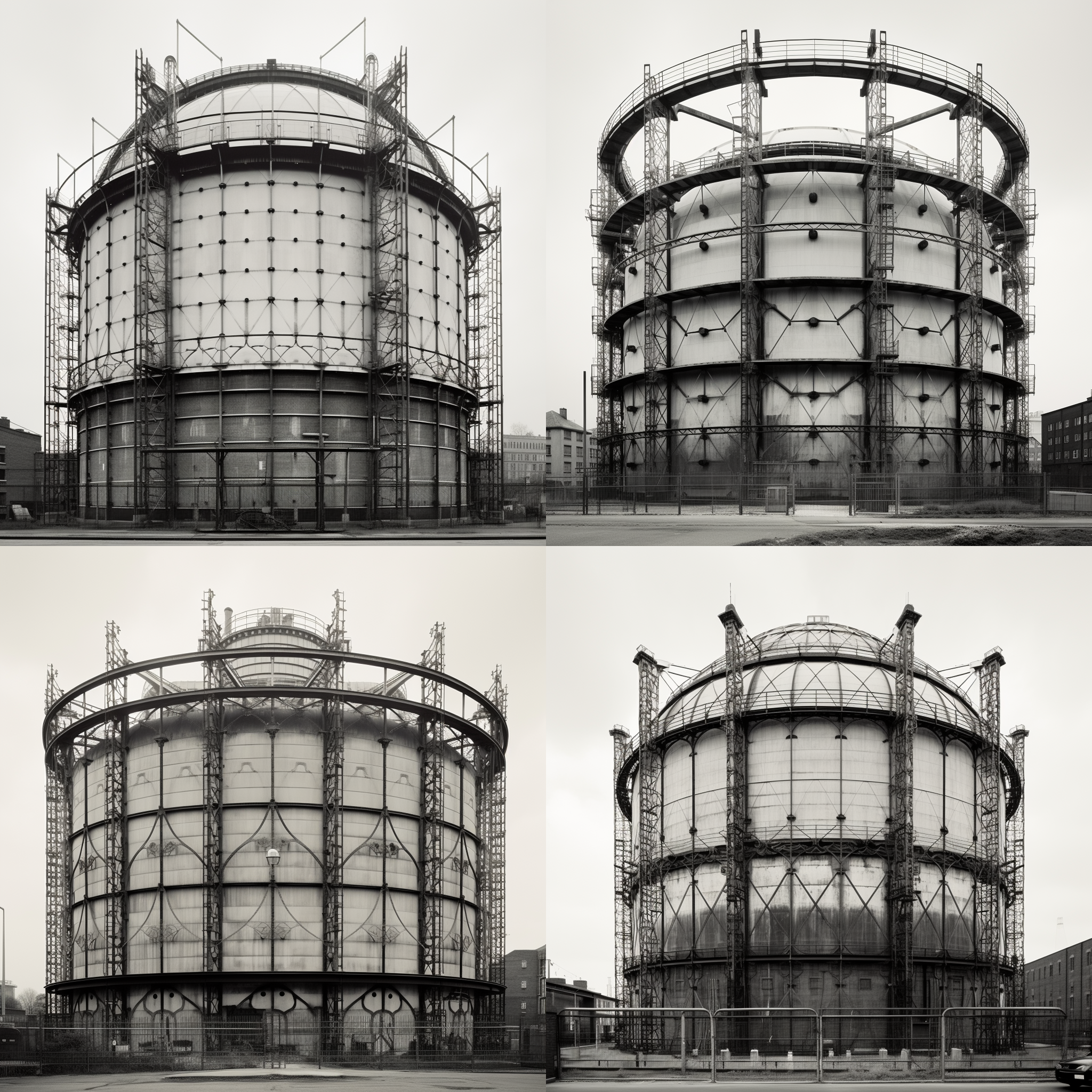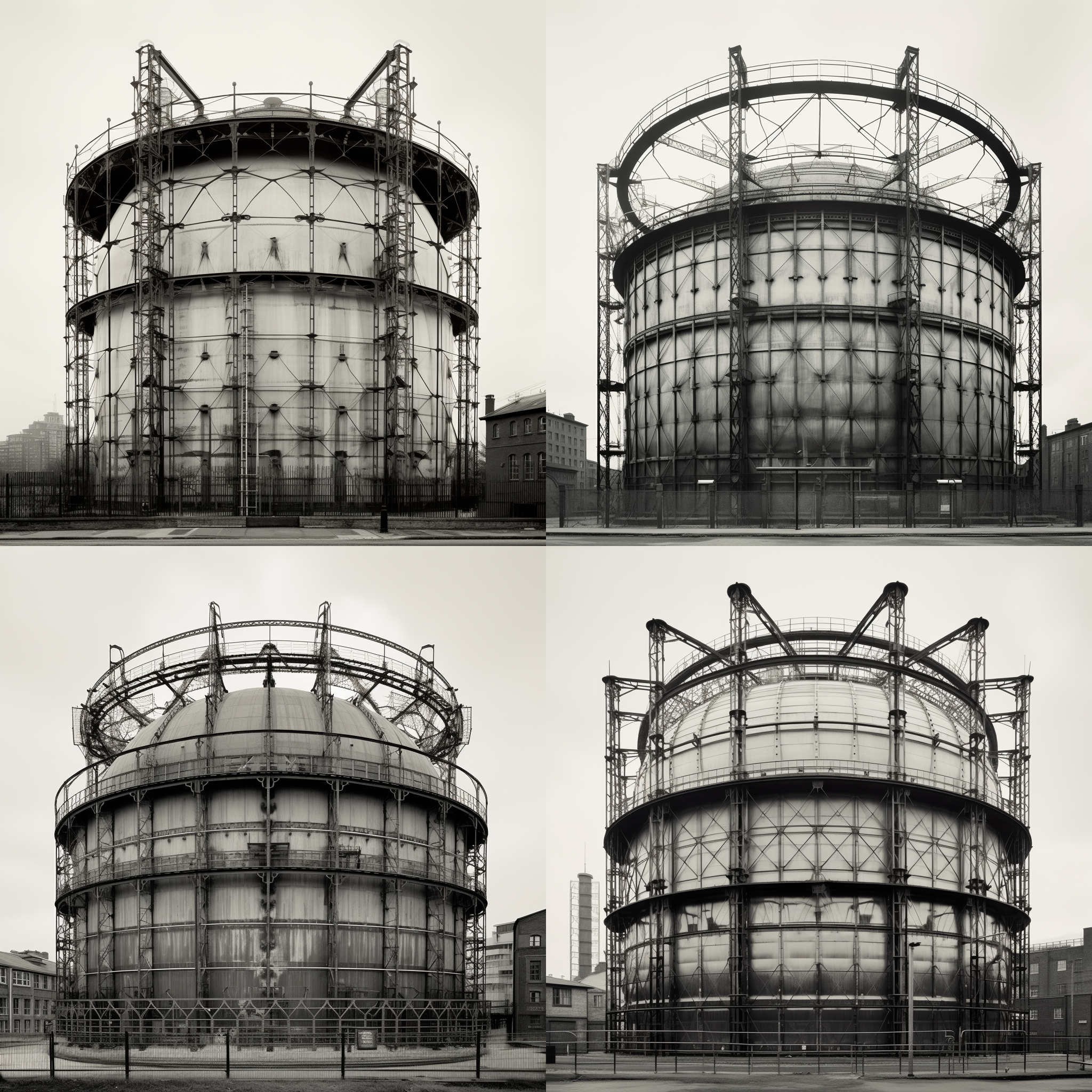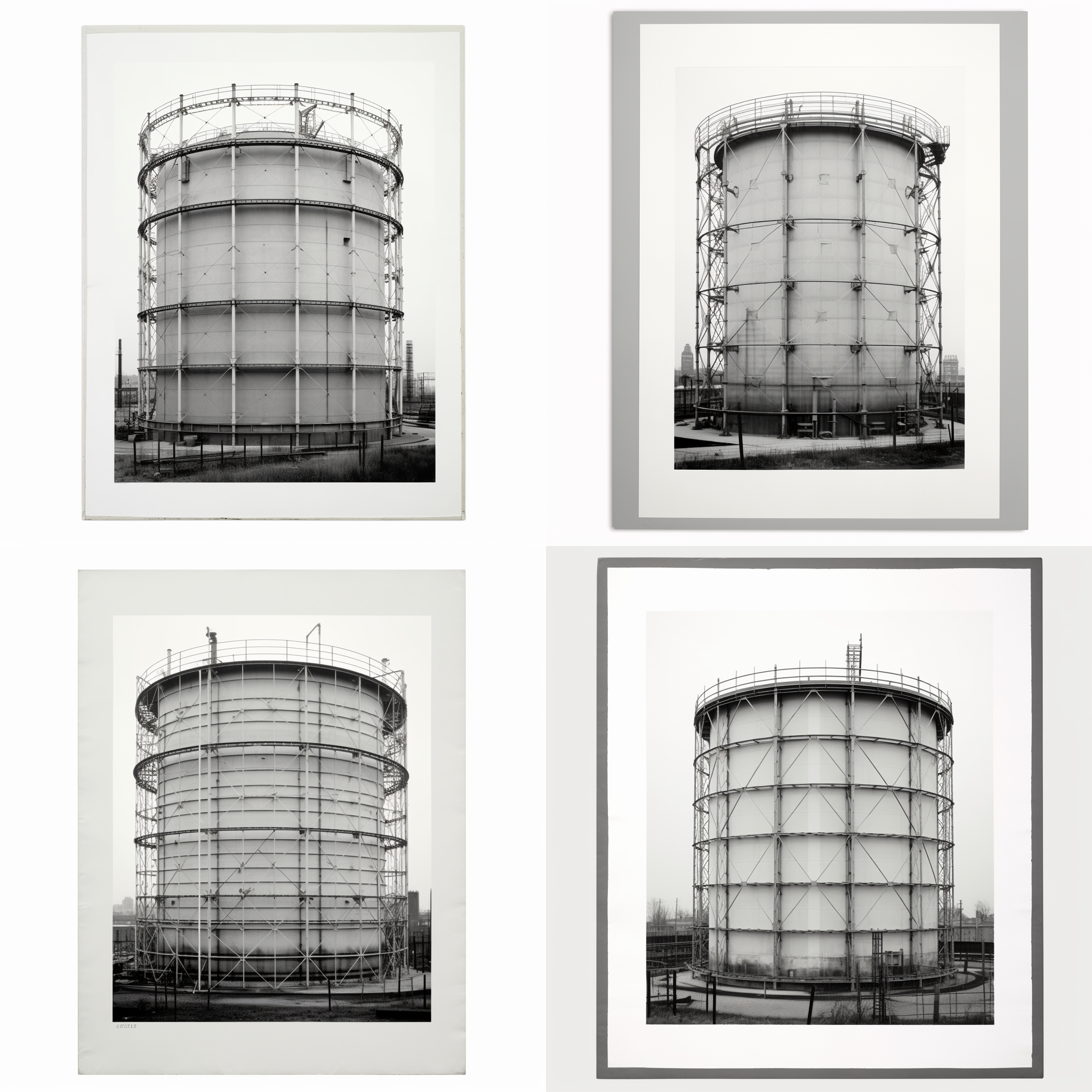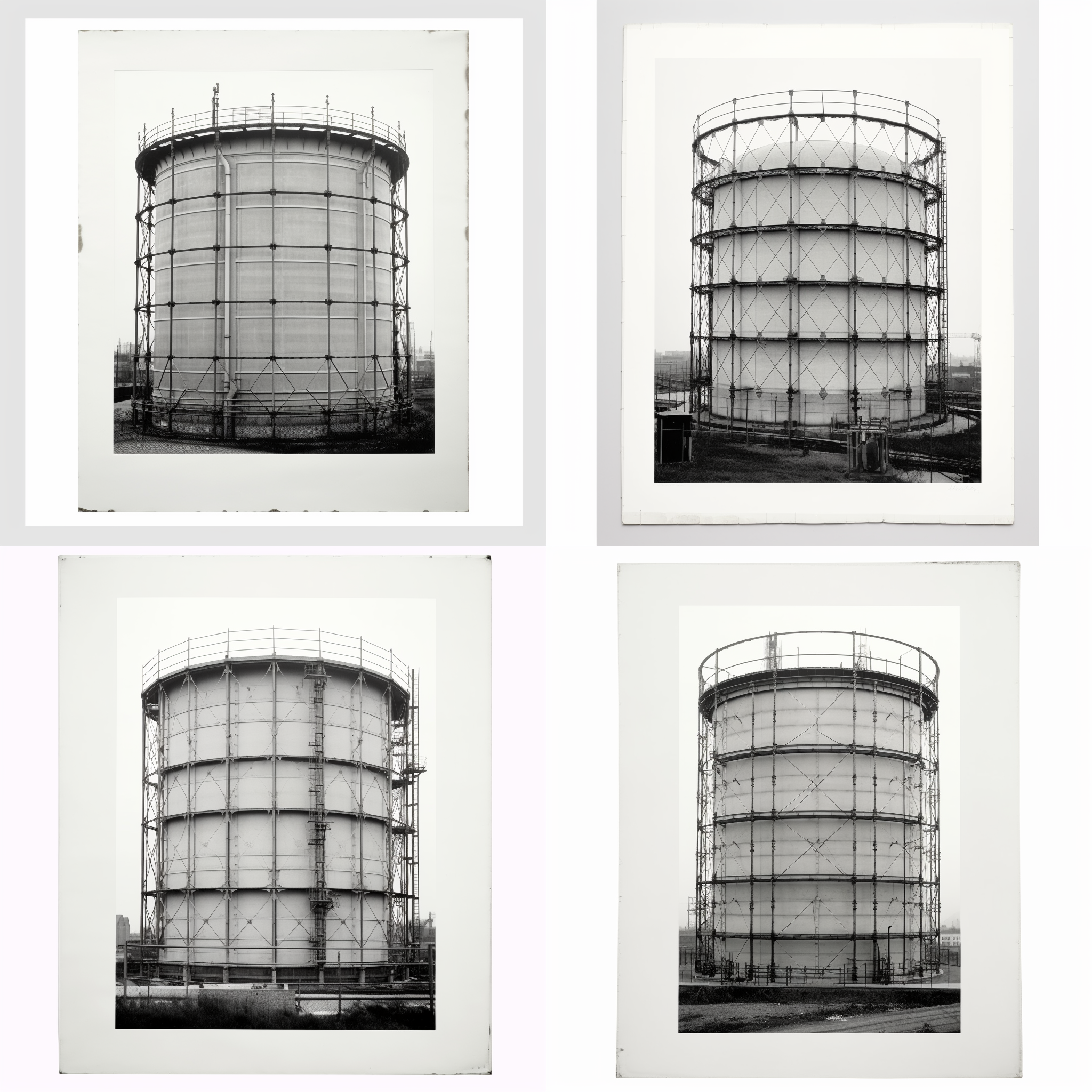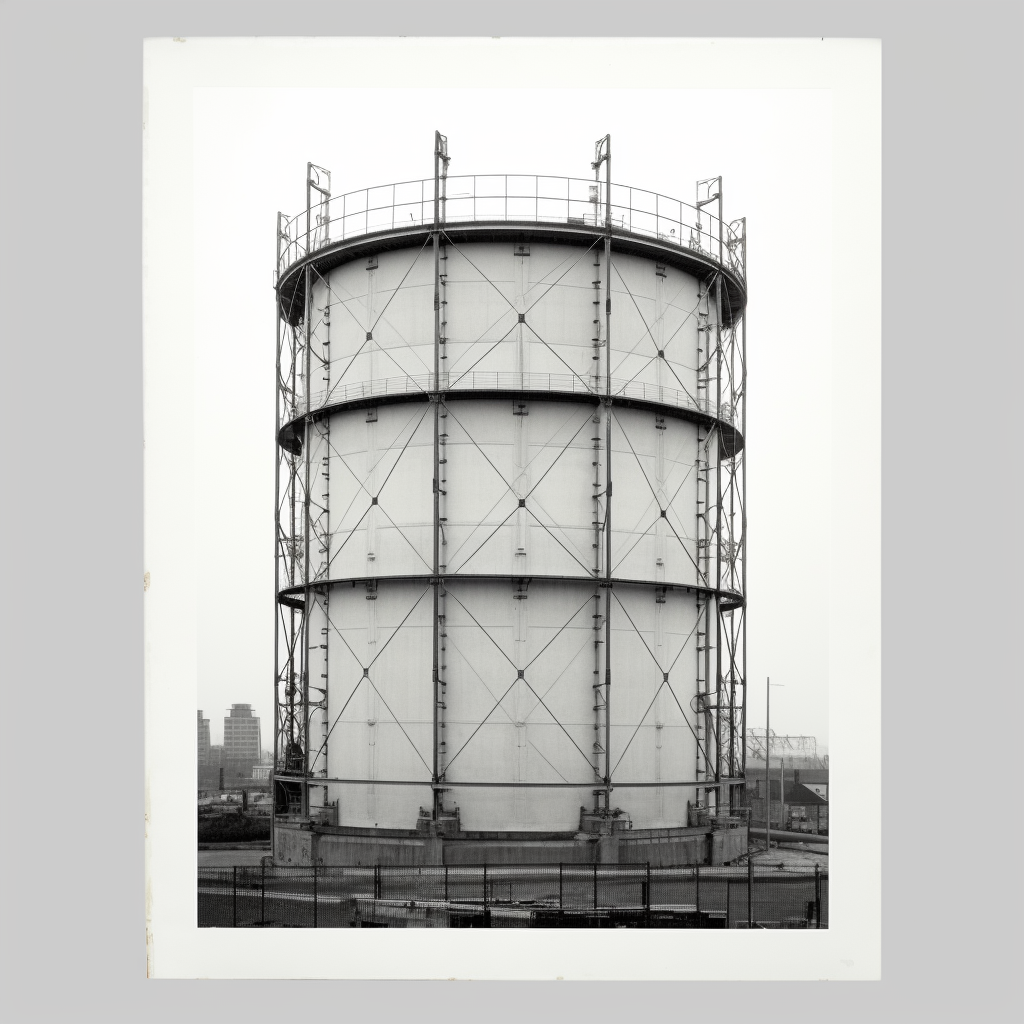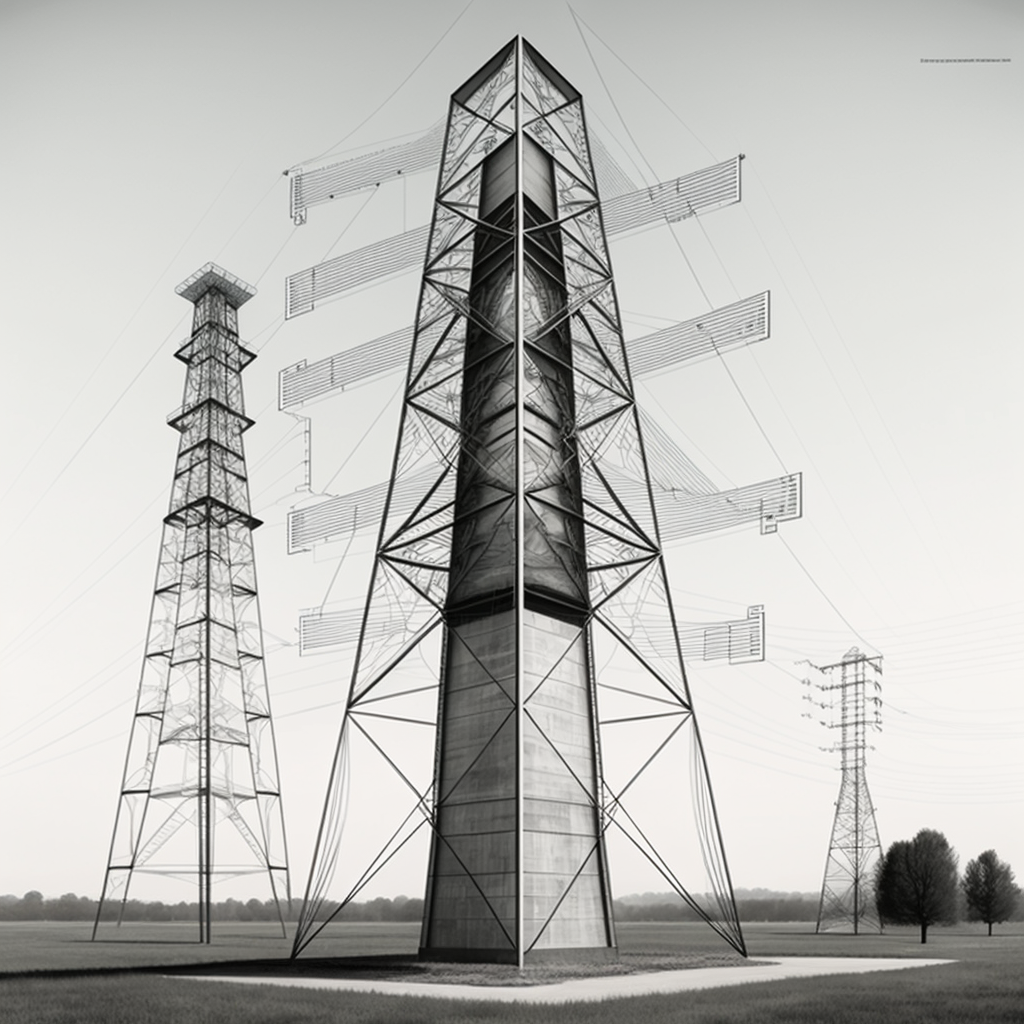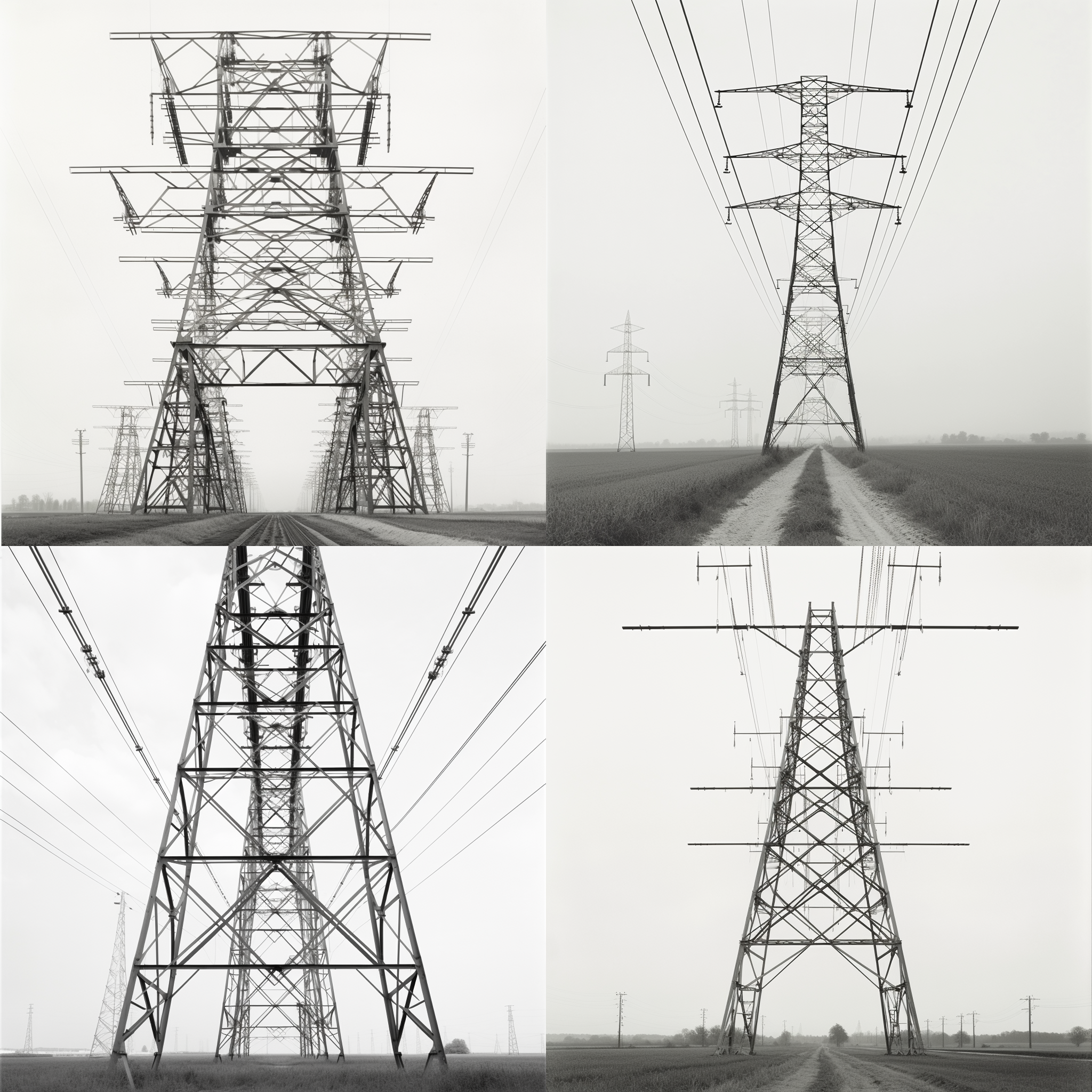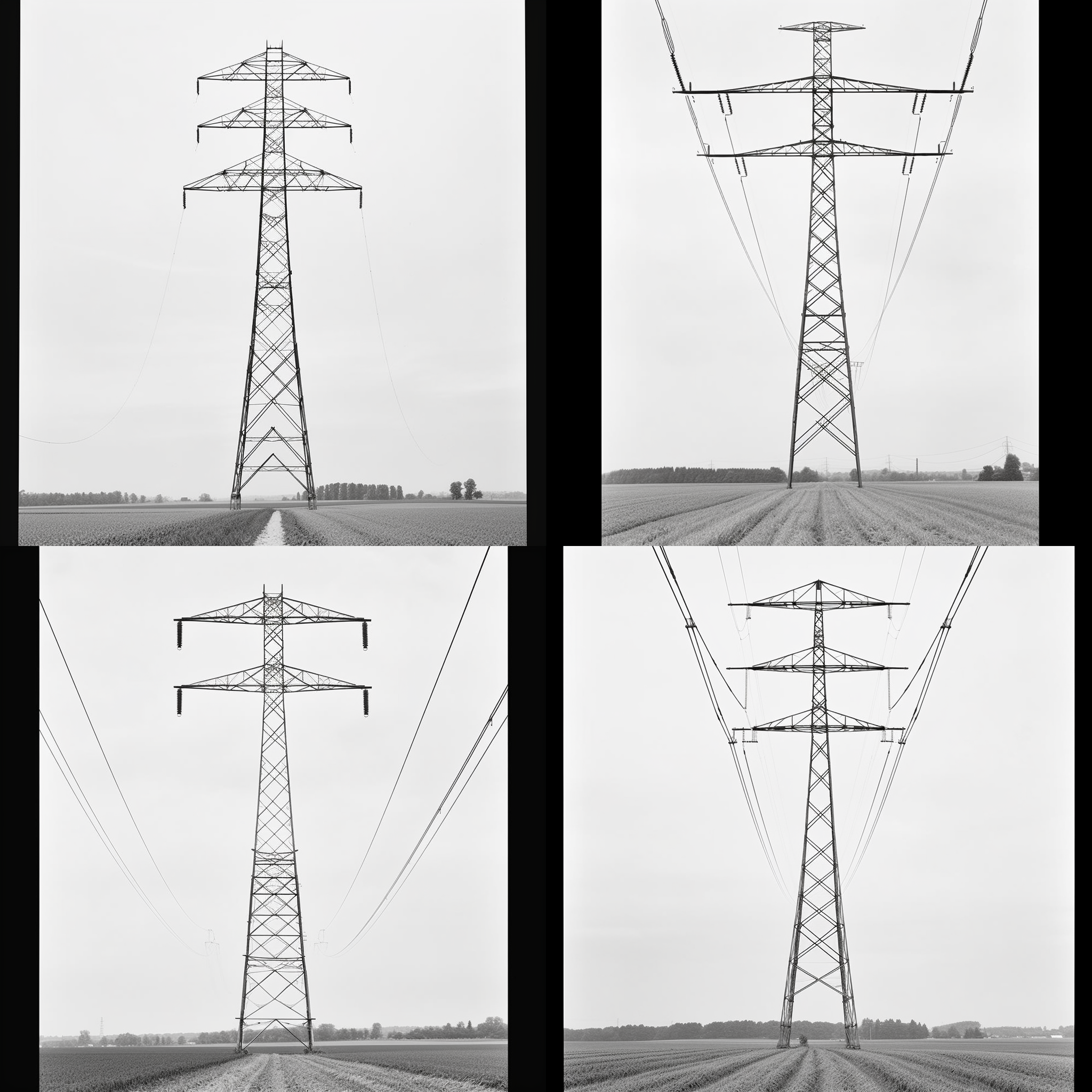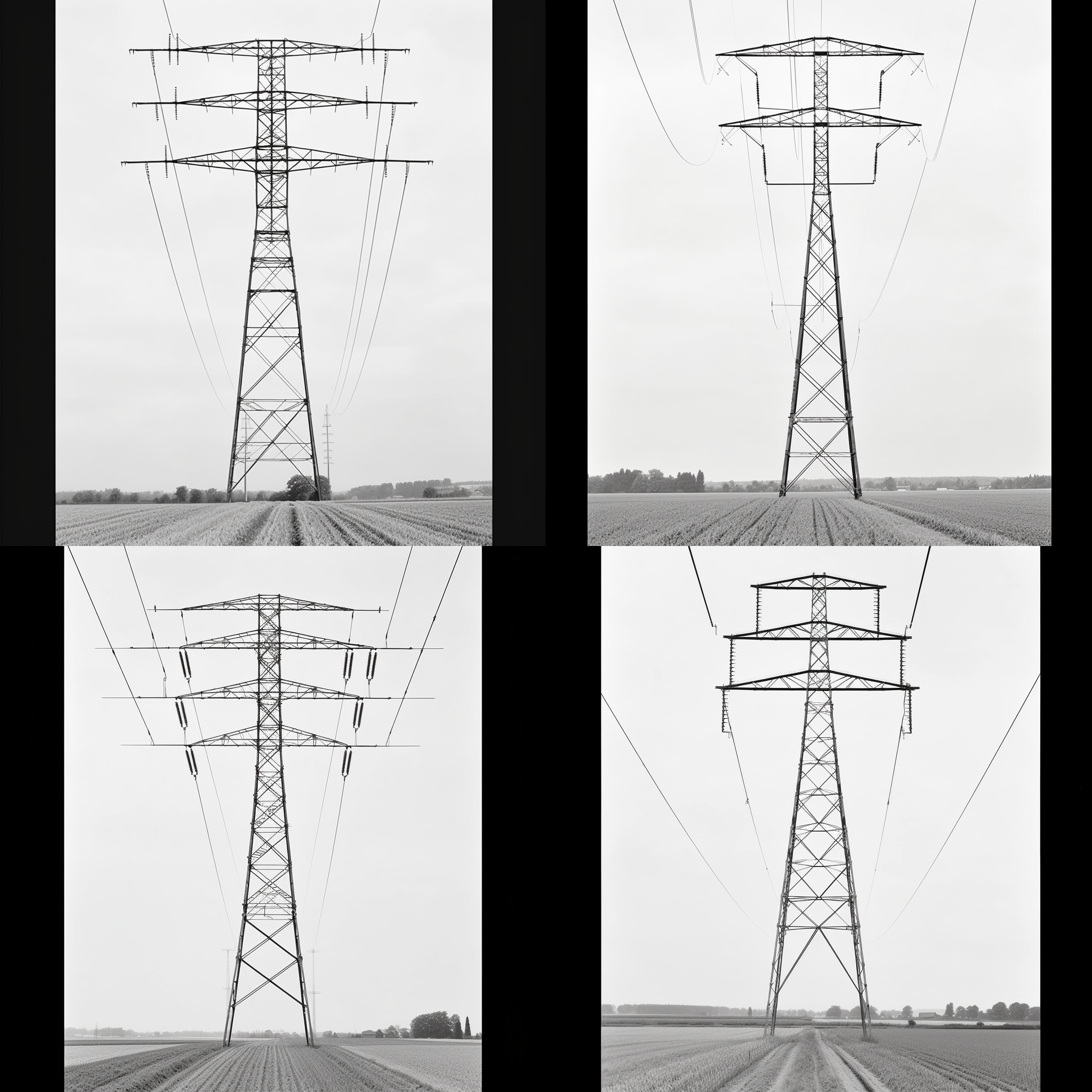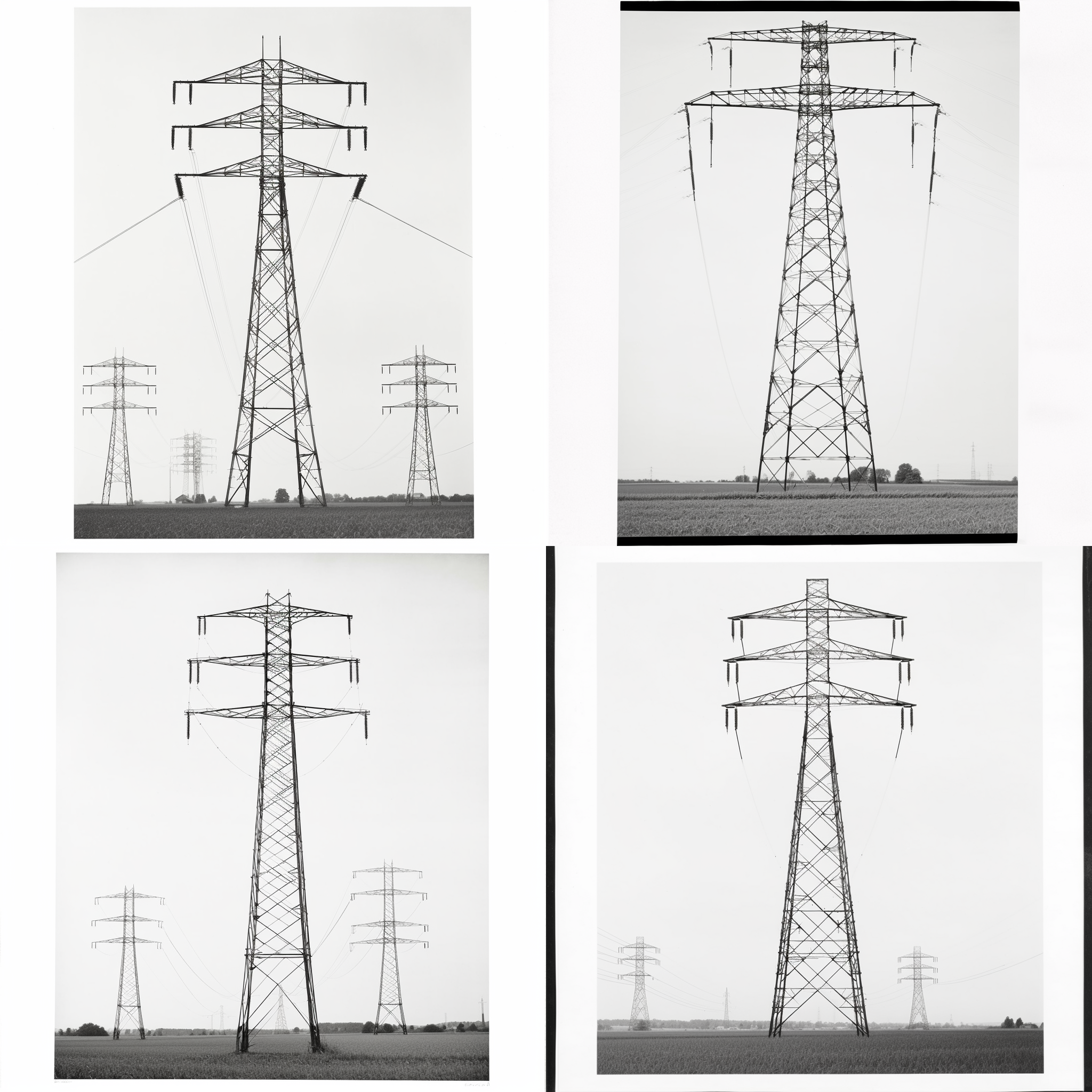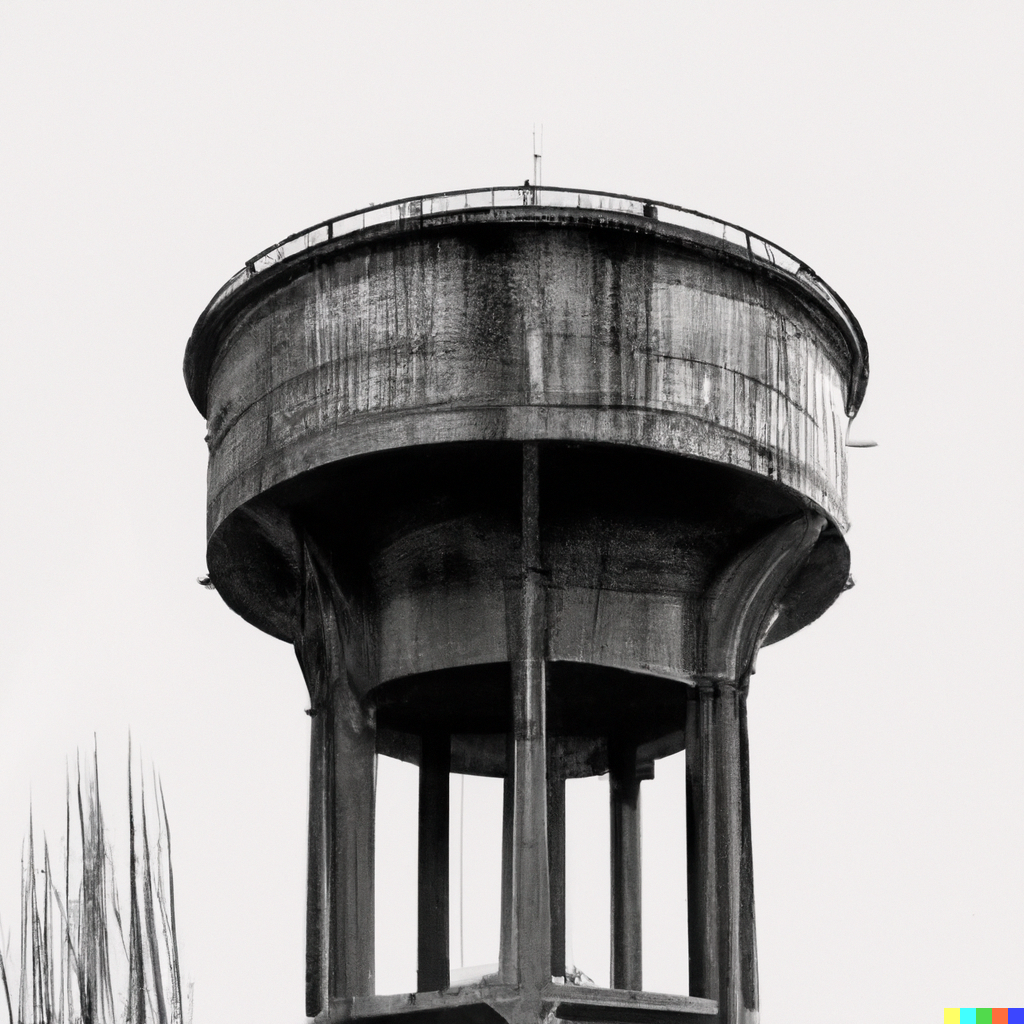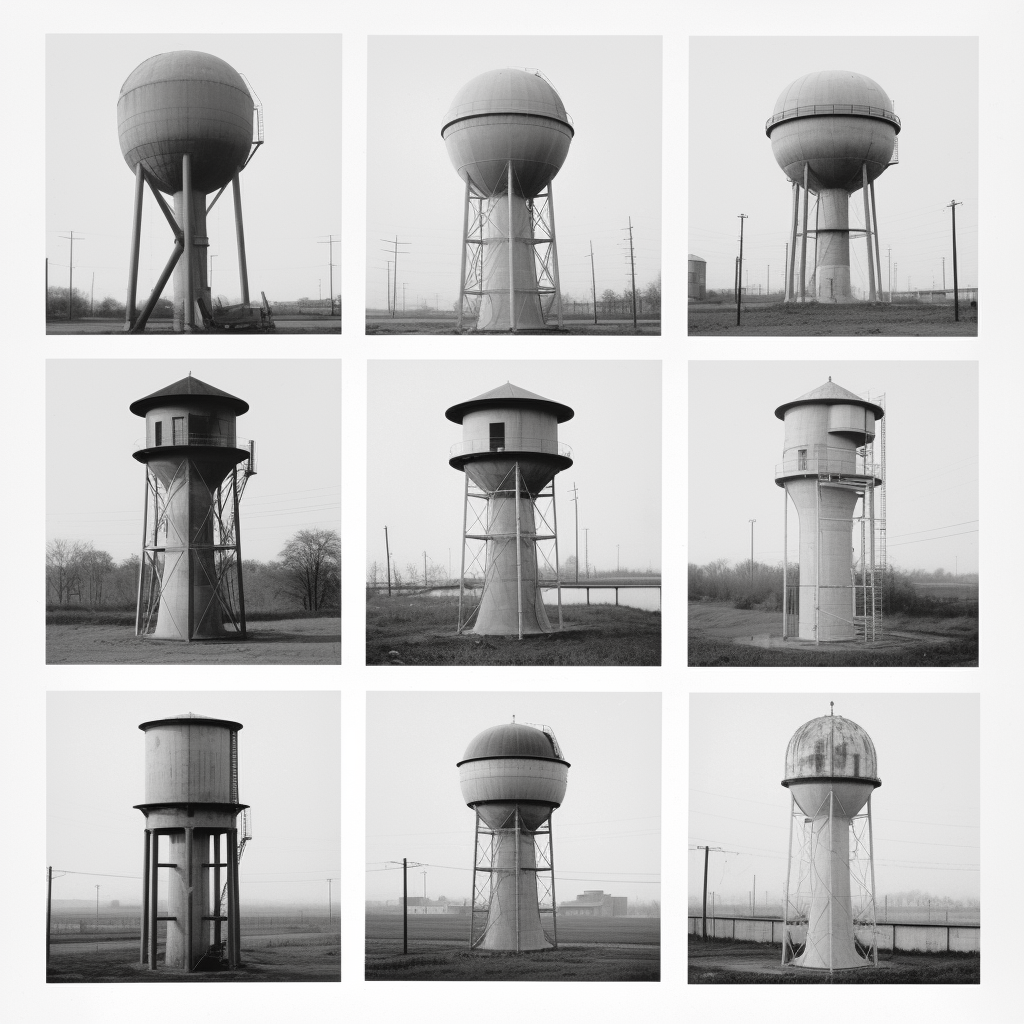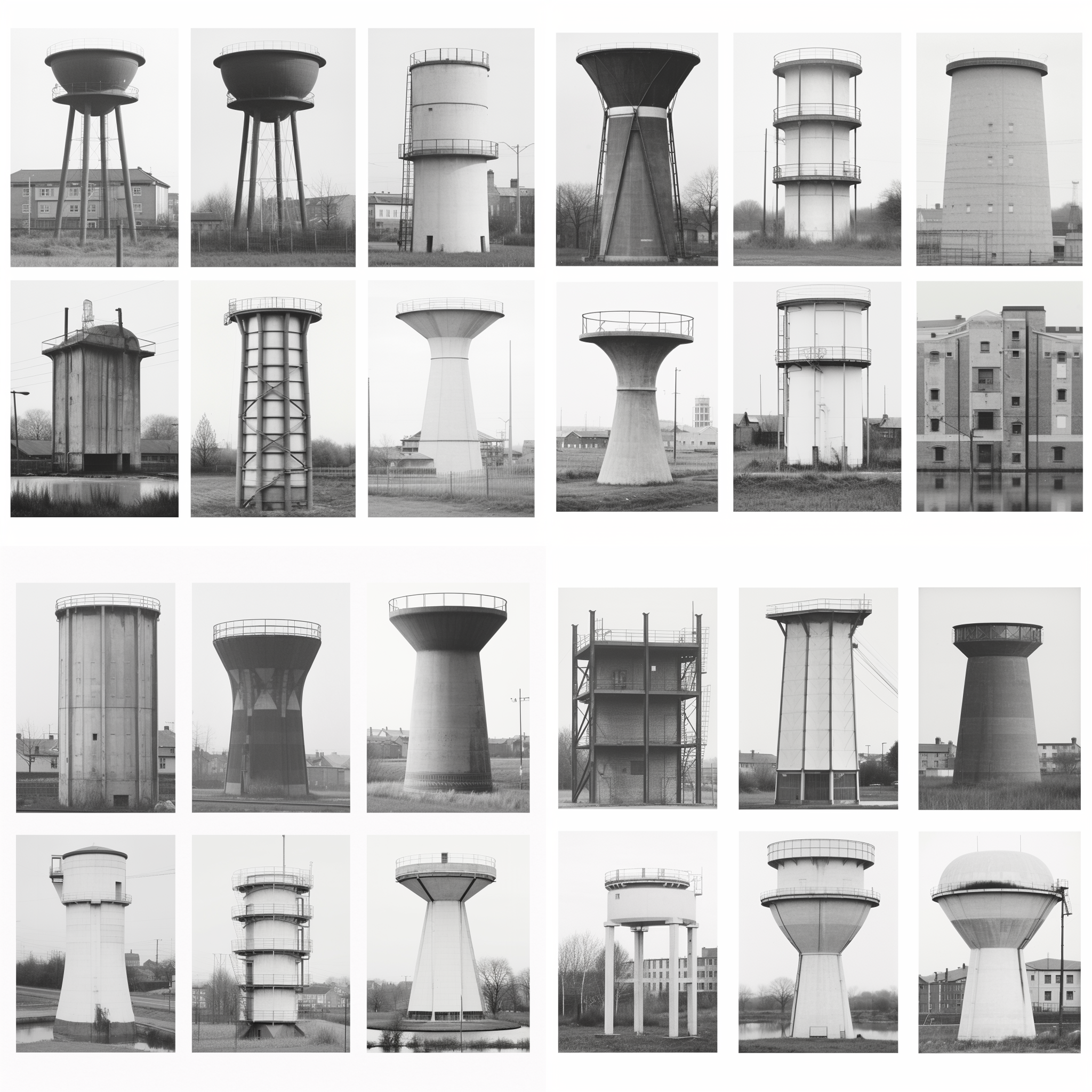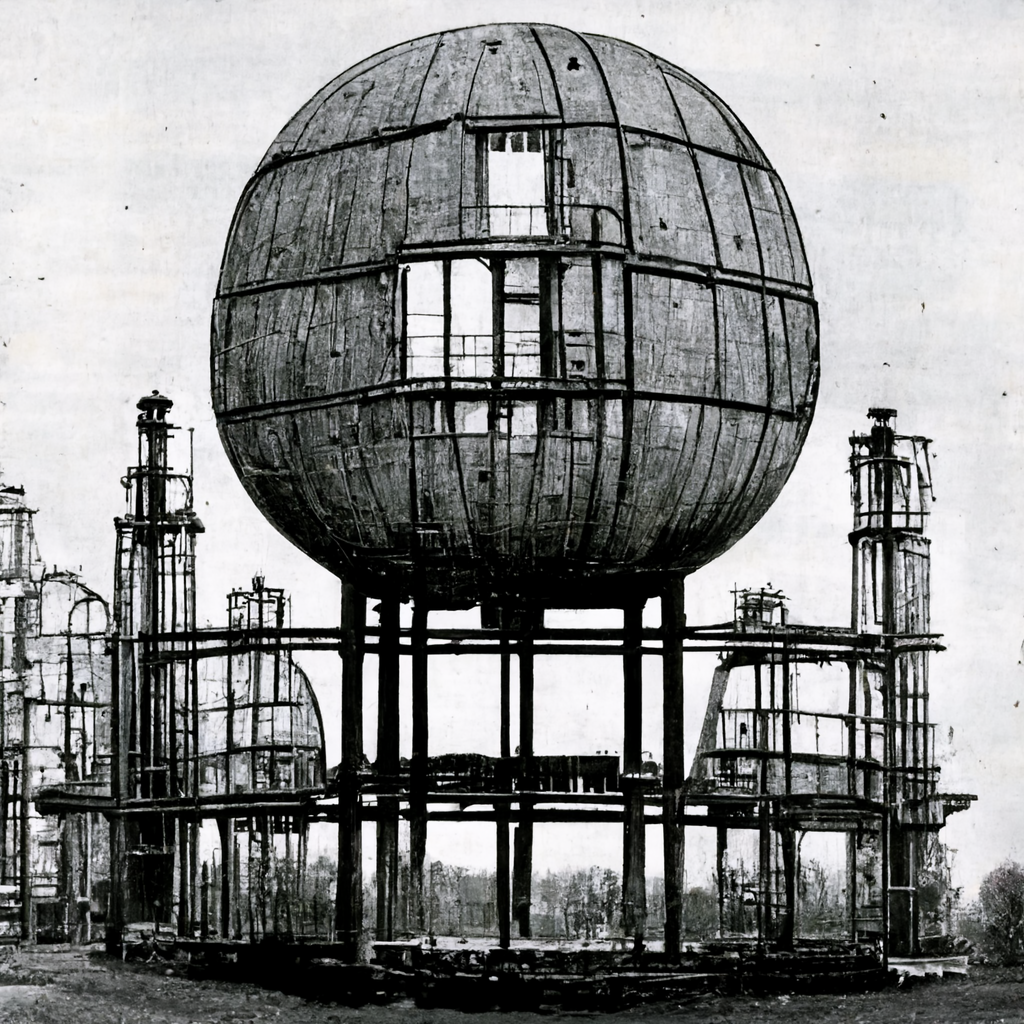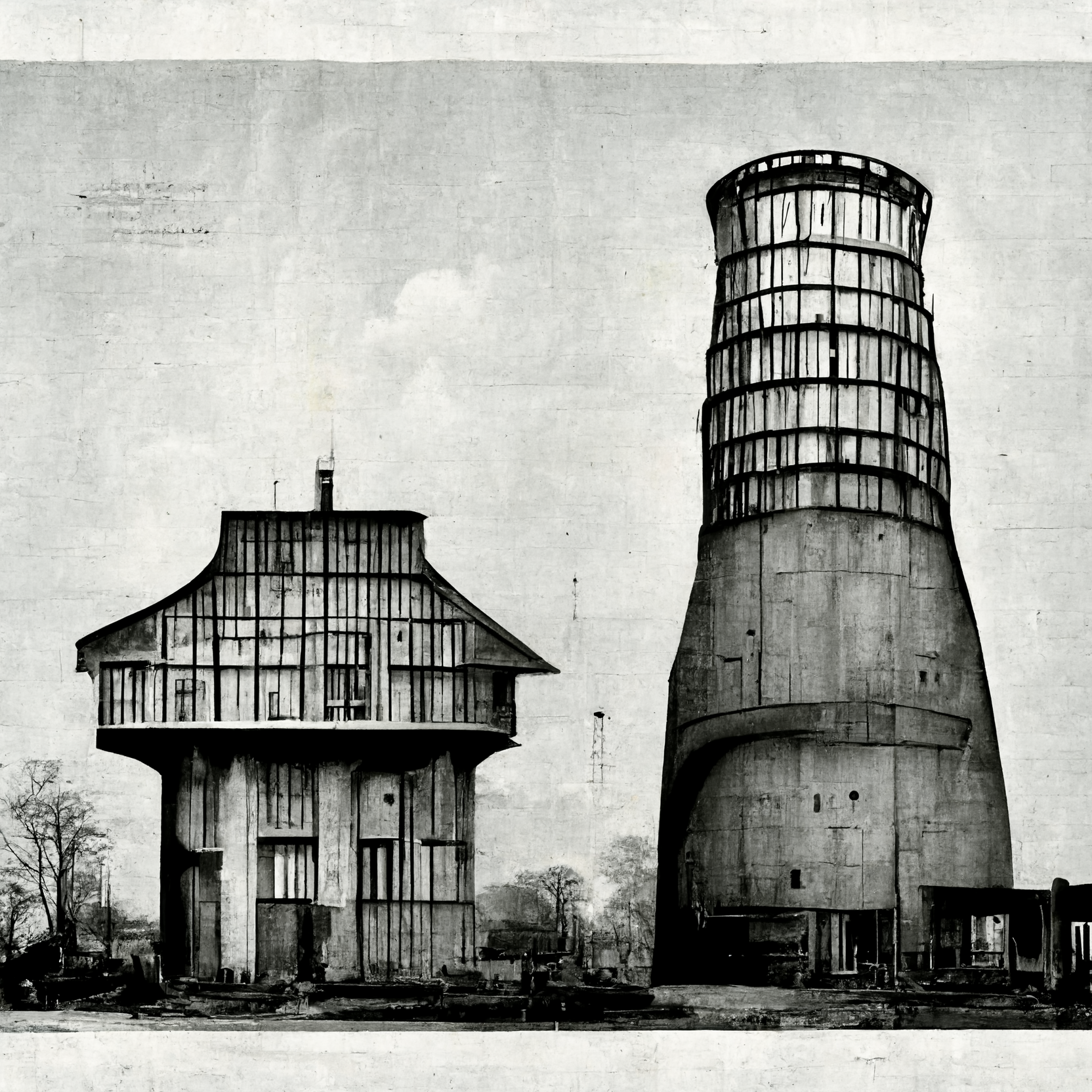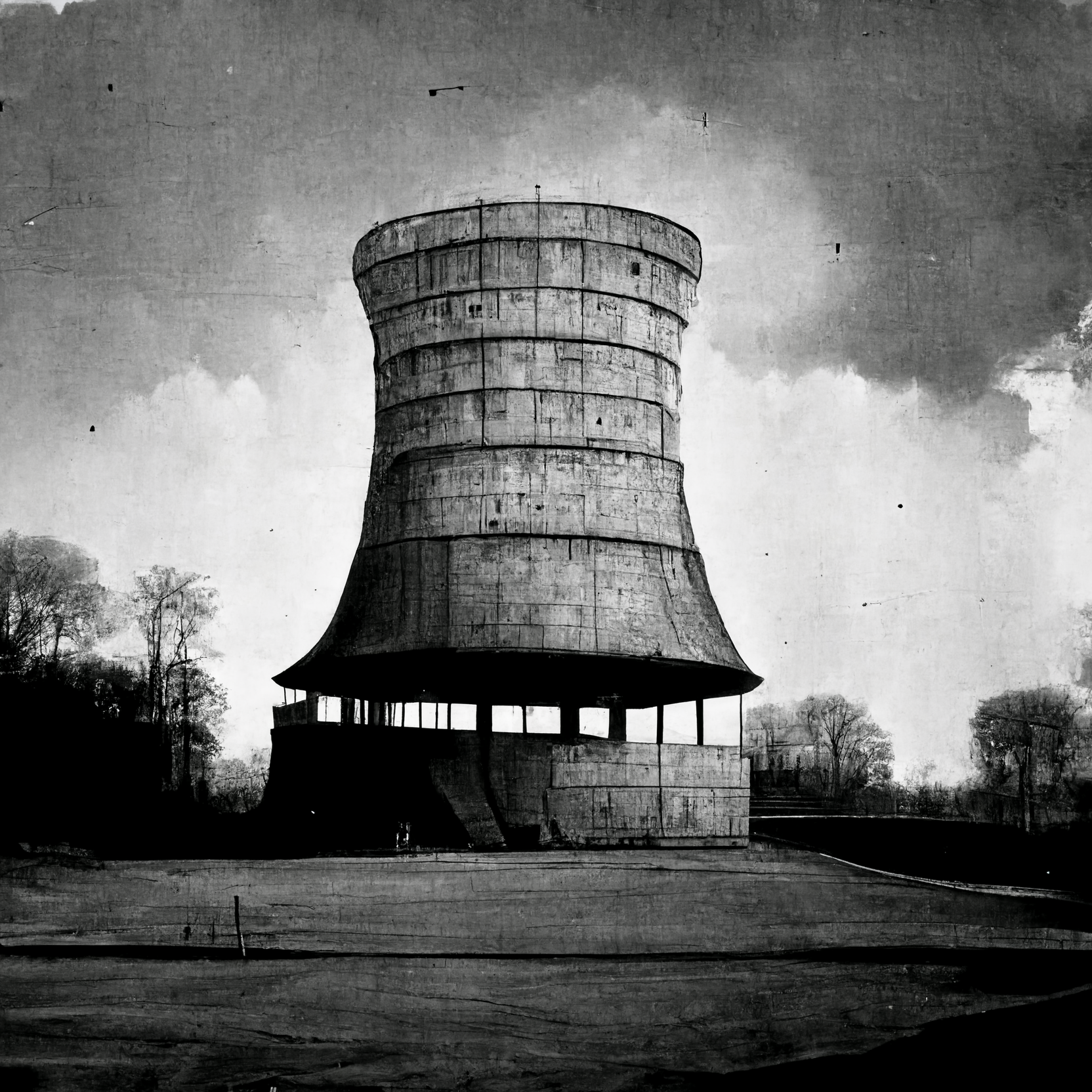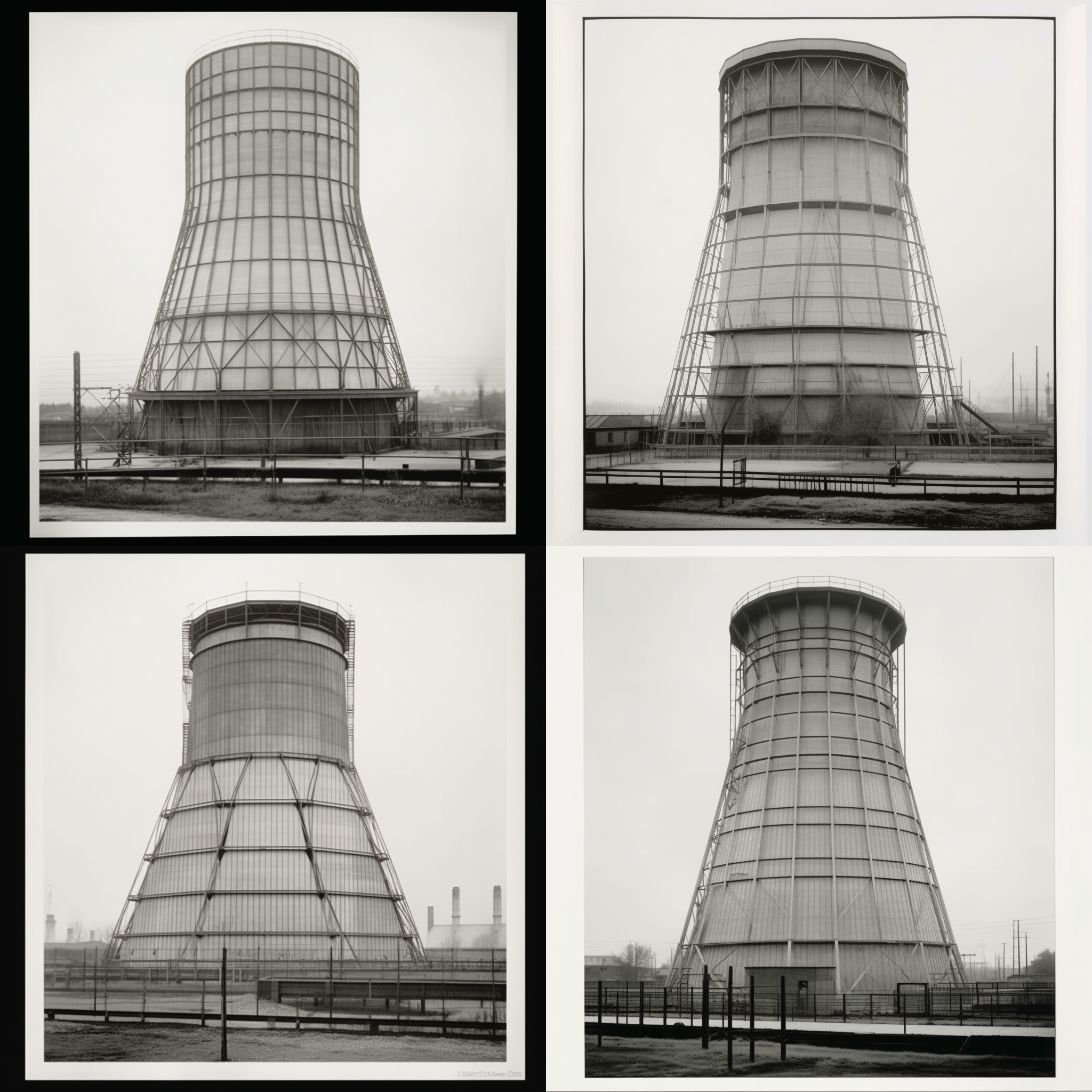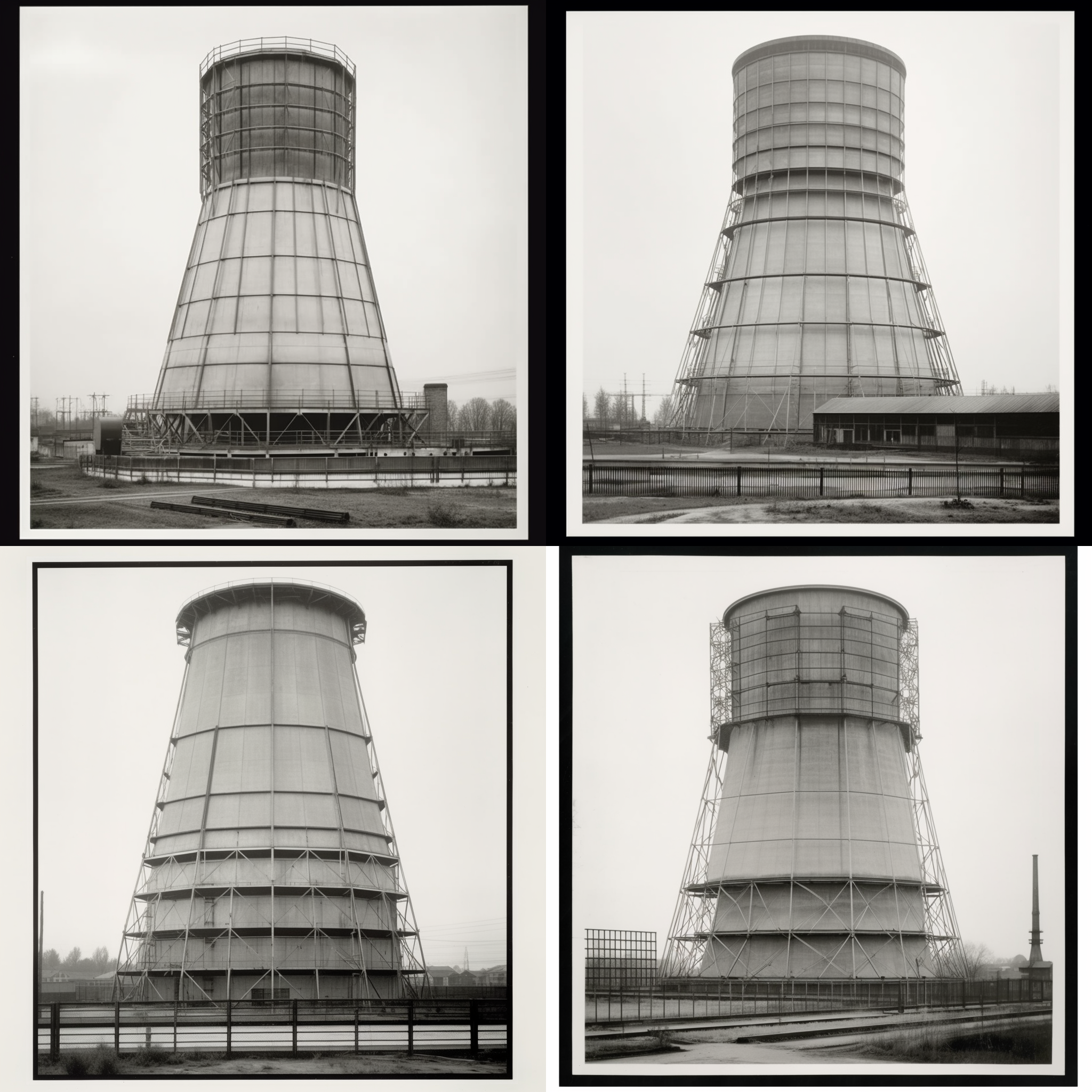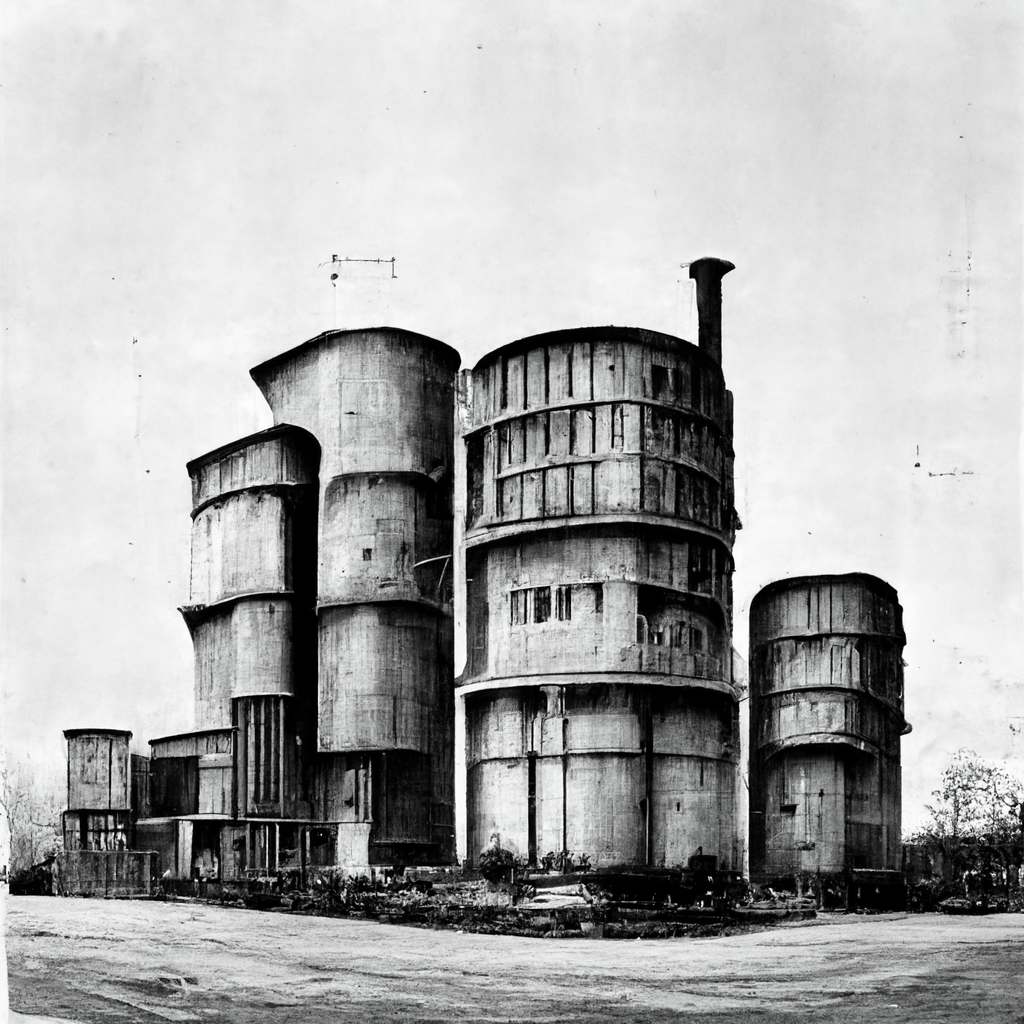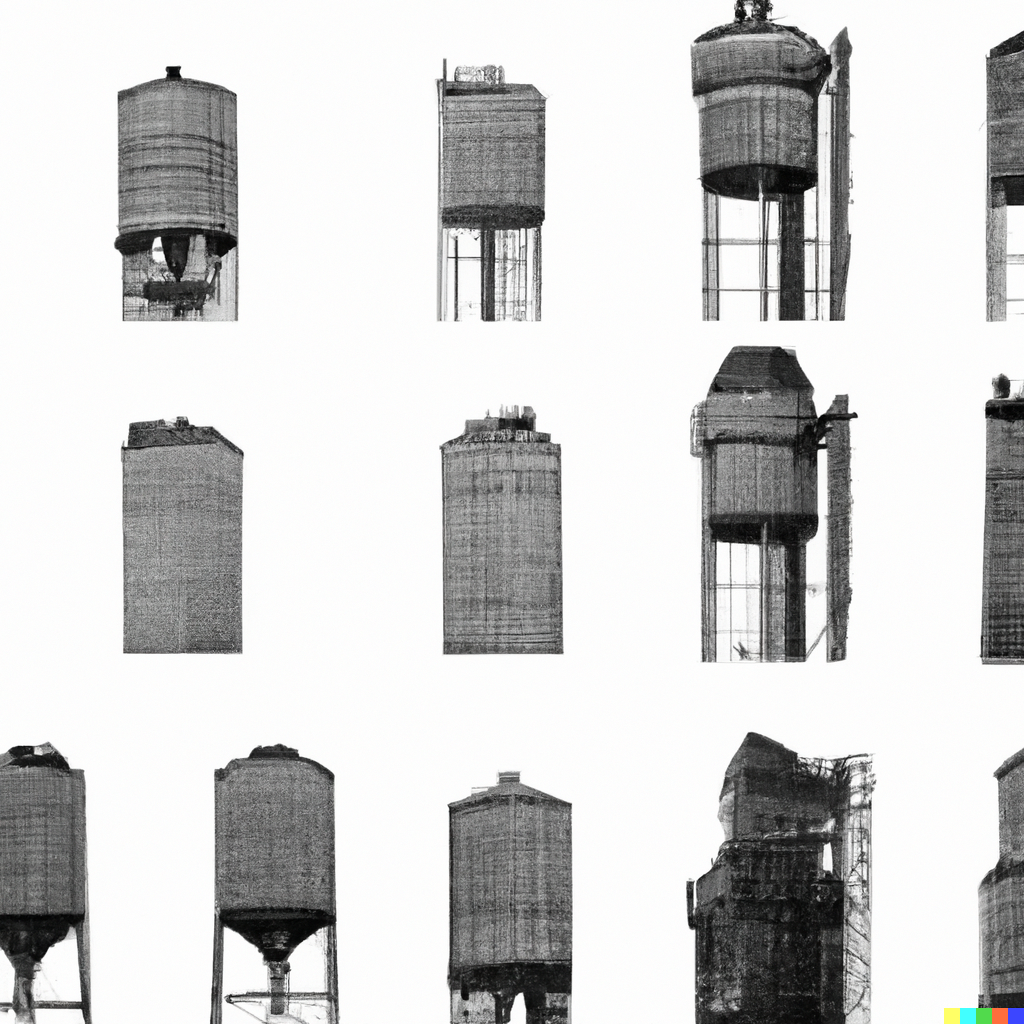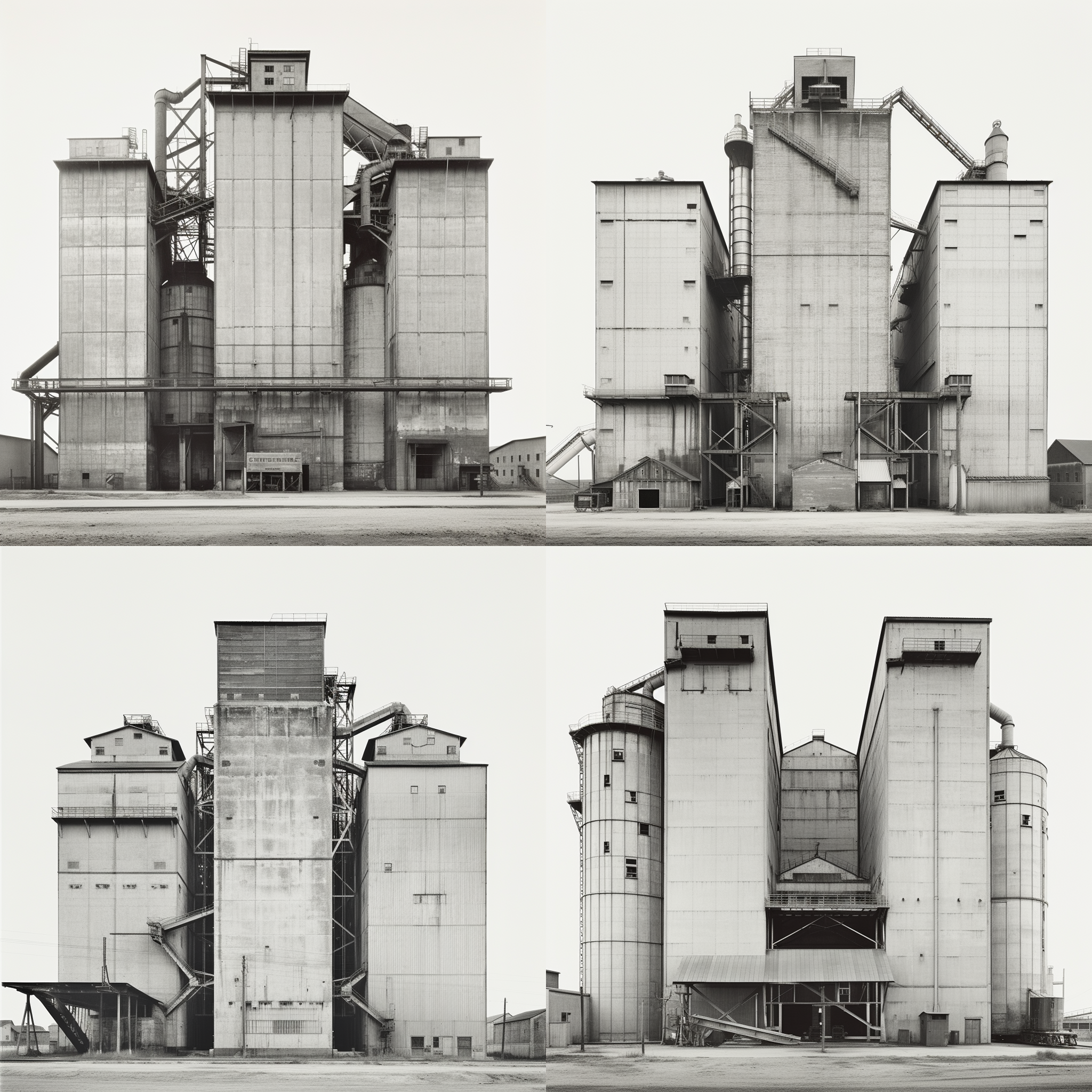



Anarchaetypologies
Much like Idris Khan’s postmodern homage, this project appropriates the incredibly influential work of Bernd and Hilla Becher, but this time using artificial intelligence. Various models were trained on the Bechers’ Typologies series, to see if they could learn to imitate these archetypal forms. As time went on the results got closer and closer to the Bechers’ work, revealing the rapid development of text-to-image technologies over the last two years. The earliest results are the most interesting though. While they certainly look nothing like the Bechers’ original photographs, in attempting to imitate them, we can see how these forms and ideas have become encoded as strange abstractions within cultural data. Because Denoising Diffusion Probabilistic Models always start with random noise as their source material, bizarre and chaotic results can sometimes ensue, particularly when the model isn’t sure what it is meant to be creating. It is at these moments of instability that AI can be the most creative and original. The more advanced the technology becomes, the more it resembles a straight copying machine.
Something else about AI image creation also resembles Bechers’ Typologies. With tools like Midjourney you can create endless variations of anything it produces for you. Each time you create a new variation you are presented with four different types of the same object, but here the differences are random and meaningless. Much like with the Bechers approach, we are reduced to appreciating them as aesthetic forms. There is no function or content.
Medium
AI
Year
2022 - 2023







